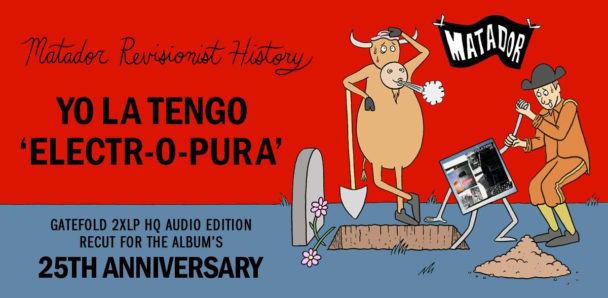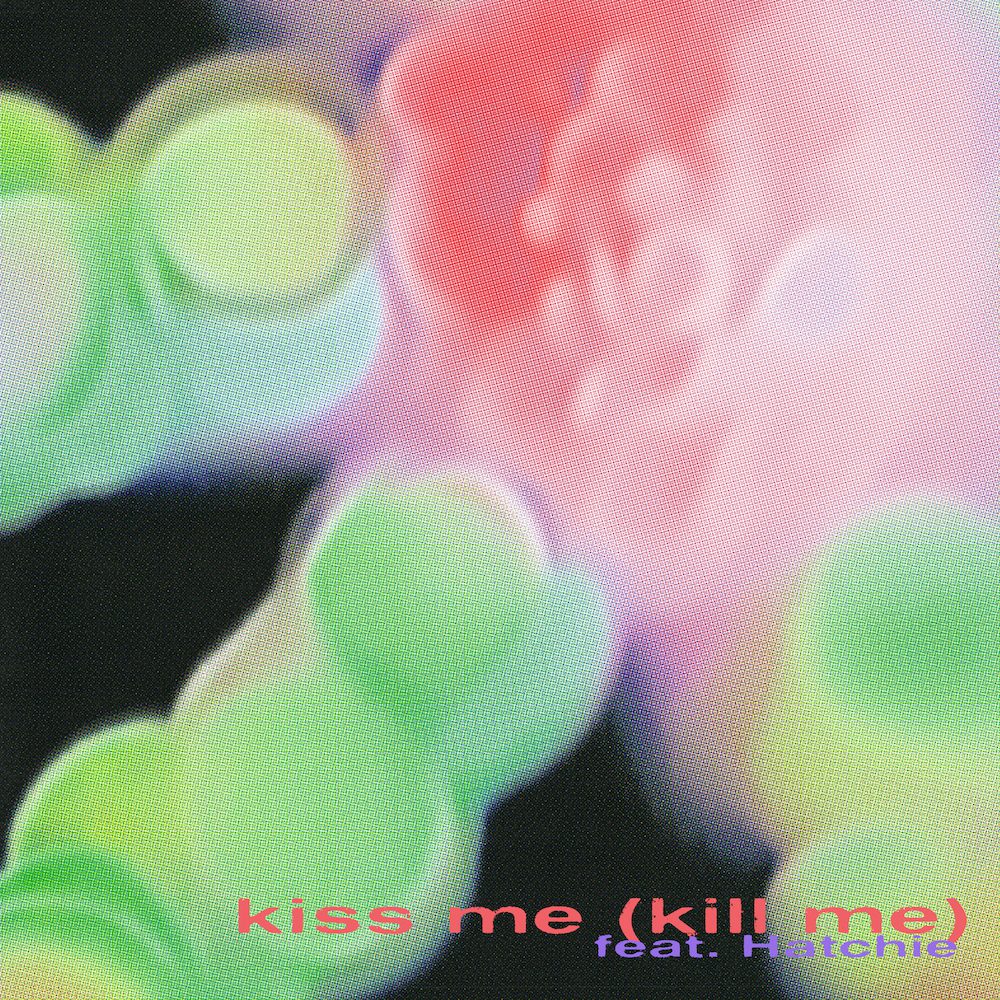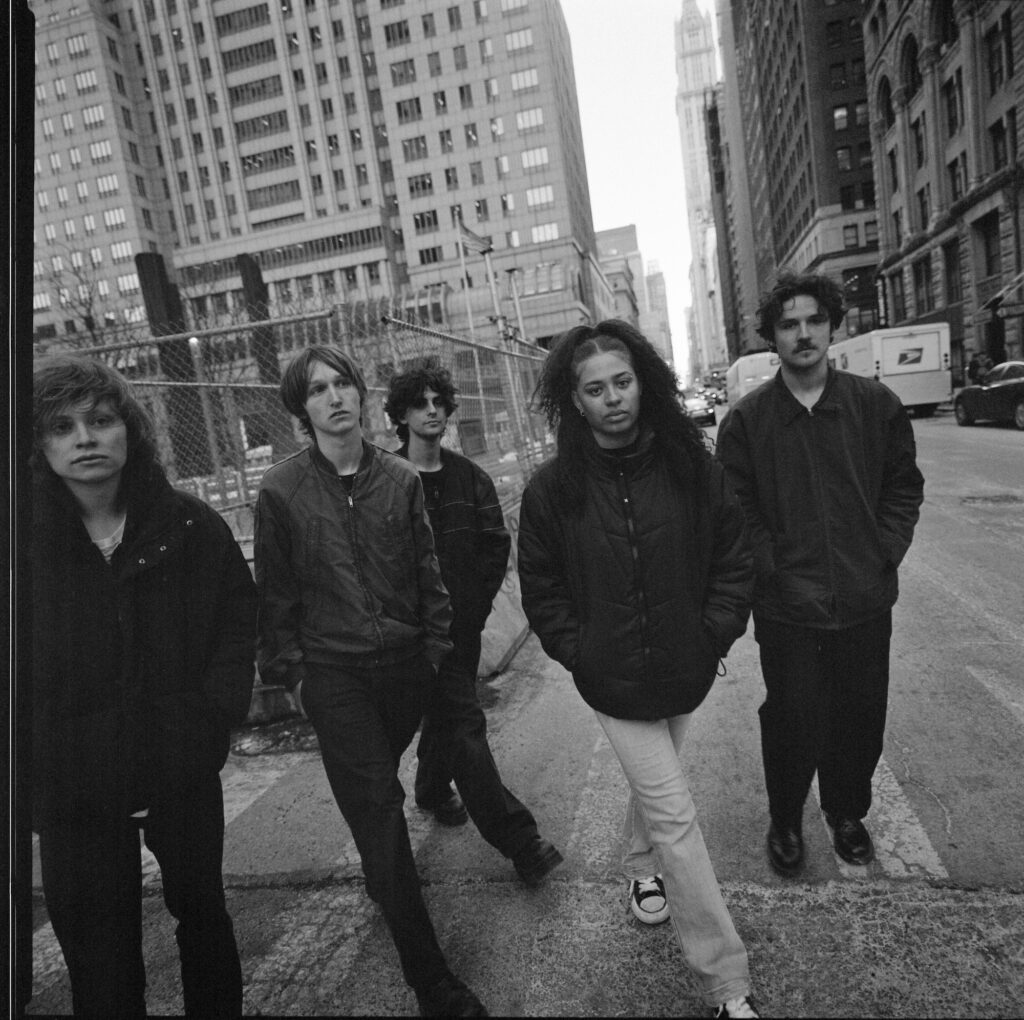Lucy Dacus, the rumors are true! The Virginia indie-rock all-star and boygenius member is going all out to celebrate this Saturday’s 25th anniversary of her Matador label-mates Yo La Tengo’s Electr-o-pura, which also happens to be her own 25th birthday. Matador has announced a deluxe reissue of the album today, much like the ones they’re doing for other 1995 classics such as Guided By Voices’ Alien Lanes and Pavement’s Wowee Zowee. (The 1995 reissue series, which Matador is calling Revisionist History, will move on to 1995 albums from Chavez, Bailter Space, and Mary Timony later this year.) With the Yo La Tengo reissue announcement comes two fantastic offerings from Dacus: She’s both penned an essay about Electr-o-pura and covered its most iconic track, “Tom Courtenay.”
In her essay, Dacus describes discovering Yo La Tengo at age 14 through a friend who turned her on to lots of hip music. “One day my friend brought me a stack of CDs, all Yo La Tengo, and told me to take them home, listen to them, burn them, and return them,” she writes. “I did what I was told. I liked those records from the start, and more with every listen. I’d lay in bed listening to one of their records, pause the song I was listening to when I got too tired, then push play upon waking.” She also reveals that “Tom Courtenay” was the first Yo La Tengo song she learned on guitar, and that its lyrics endlessly fascinated her: “I didn’t know what the needle had to do with anything, but I couldn’t stop thinking about it. It was like any good poem, leaving space for me, between images. Now, I think the song may be about obsession with media, equating the allure of the movies and movie stars to drug addiction. Who knows, that’s just my take.”
Although the album version of “Tom Courtenay” is one of Yo La Tengo’s definitive fuzz-pop tracks, Dacus has reinterpreted the song as a solo guitar ballad, not unlike one of the softly pretty songs Ira Kaplan and Georgia Hubley tend to come back to amidst all their other myriad genre exercises. It has me listening more closely to the lyrics than I ever have before. Watch her play the song below, where you can also read her full Electr-o-pura essay.
Here’s the essay:
I was born on May 2, 1995, the day that Electr-o-pura came out.
Fourteen years later, I started high school and made a new friend who wore a leather jacket and boots, who expressed confident opinions about music that I had never heard. I devoured every recommendation they gave me in an effort to align my tastes. I wanted to be cool, or at least not uncool. I found out about The Stooges, Philip Glass, and Sonic Youth through my effort to win their approval. I loved it all, and my parents hated every new discovery. Cool was loud.
One day my friend brought me a stack of CDs, all Yo La Tengo, and told me to take them home, listen to them, burn them, and return them. I did what I was told. I liked those records from the start, and more with every listen. I’d lay in bed listening to one of their records, pause the song I was listening to when I got too tired, then push play upon waking.
I remember my confusion upon listening to Electr-o-pura for the first time. I referenced the tracklist on the back of the CD so I could learn titles, but the printed song durations didn’t match up to what I was hearing. I wondered if there was some manufacturing error and I wasn’t hearing the songs I was supposed to hear. “Flying Lesson (Hot Chicken #1)” is listed as lasting just over three minutes when it’s actually 6:42. “Blue Line Swinger” says it’s 3:15, but actually clocks in at 9:18. I know now from looking into it that Yo La Tengo intentionally misprinted the times, trying to combat short attention spans, hoping they would trick people into giving those long songs a chance. It tricked me, though I’m a sucker for long songs anyways. It’s interesting to think about how this move couldn’t be pulled today in a world of digitized music. And if people had short attention spans then, how short are they now? All to say, I liked that they were playful.
What kept me coming back to Yo La Tengo was their understanding of moods. I listened to bands that knew anger, bands that knew sadness, but I didn’t know of any other bands that could express a full life’s range of moods the way they can. From song to song, the music was anxious, celebratory, sorrowful, content, confused, etc. And even when they got loud or dissonant, it never felt hostile. The sounds could be harsh, even ugly, but they were joyful. Some songs could make me cry, but they were gentle, not malevolent. I was taking on someone else’s tastes, and in the process, discovering my own.
“Tom Courtenay” was the first Yo La Tengo song I learned on guitar. I didn’t know what it meant, but I knew who Julie Christie was and loved the line, “As the music swells somehow stronger from adversity / our hero finds his inner peace.” I didn’t know what the needle had to do with anything, but I couldn’t stop thinking about it. It was like any good poem, leaving space for me, between images. Now, I think the song may be about obsession with media, equating the allure of the movies and movie stars to drug addiction. Who knows, that’s just my take.
Eventually when Matador asked to sign me, the fact that Yo La Tengo is on their roster was a major component of my decision. They’ve been putting out great albums every couple of years for over three decades, experimenting and exploring with what seems to be an uncompromised creativity. That is worth celebrating, especially now, when any opportunity for celebration is a blessing. Happy 25th birthday to Electr-o-pura, and thanks for the music, Yo La Tengo.
The deluxe Electr-o-pura reissue is out 9/4 on Matador. Pre-order it here.




